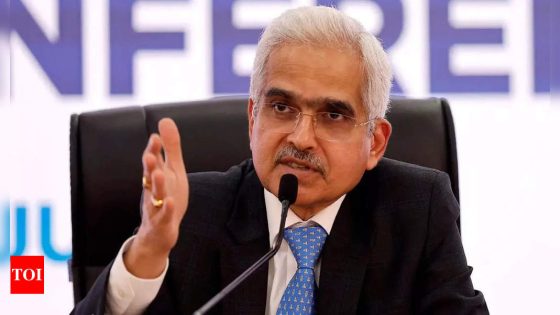A sharp decline in Taiwan’s ties with mainland China could extend to the very devices being used to transmit and read this story.
The far-reaching implications from what has been a geopolitical tug of war are ultimately likely to bolster mainland China’s standing as a dominant supplier of older-model semiconductors while ramping up the need for Western allies to rely more on themselves for cutting-edge chips – a scenario that industry insiders say threatens to erode Taiwan’s formidable “silicon shield” that has long afforded the island a privileged position in the global supply chain.
The island’s continued production of nine in 10 of the world’s advanced chips at factories is unmatched anywhere, and it helped earn Taiwan that defensible sobriquet around the turn of the century.
Do you have questions about the biggest topics and trends from around the world? Get the answers with SCMP Knowledge, our new platform of curated content with explainers, FAQs, analyses and infographics brought to you by our award-winning team.
But in recent years, mainland China has invested heavily to move up the value chain for critically important chips that power everything from cellphones and other consumer devices to electric cars and applications for AI and quantum computing.
And now, mounting tensions across the Taiwan Strait – which intensified following the inauguration of William Lai on Monday as Taiwan’s leader – are pushing the West to diversify advanced chips away from Taiwan and to their own homelands in case any cross-Strait conflict threatens to end the island’s economic advantages.
Lai represents a Taiwanese political party that is cold to mainland China. He said in his inauguration speech that mainland China’s effort to “swallow up” Taiwan would “not disappear” until the island gave in.
“Uncertainties surrounding Taiwan’s economic future, security and geopolitical risks necessitate vigilant monitoring,” Saxo Capital Markets economist Redmond Wong said in a January research note. “The fate of Taiwan’s ‘silicon shield’ is uncertain as economic interdependence encounters obstacles.”
Twelve of Taiwan’s top-20 export items last year were hi-tech products, including integrated circuits – another term for chips – and printed circuits, according to the International Trade Administration in Taipei. About one-third of printed circuit boards come out of Taiwan, and the island remains a leading source of camera lenses used in iPhones.
Nearly 60 per cent of Taiwan’s semiconductors were sold to mainland China in 2023. But that once-brisk trade has fallen over the past two years amid growing political frictions. And in the first quarter of 2024, the US overtook mainland China as Taiwan’s top export destination.
The mere spectre of a rapid decline in cross-Strait ties, including a possible military blockade of Taiwan by the mainland, has already got Japan, the US and Germany interested over the past few years in onshoring the production of Taiwan’s prized chips.
Those countries are responding to the “concentration of semiconductor manufacturing capacity in Taiwan”, according to data from Taipei-based market-research firm TrendForce.
Fearing that Taiwanese supplies could become inaccessible in the wake of a cross-Strait conflict, government policymakers around the world have been discussing how advanced chips could be made domestically.
Meanwhile, Taiwanese firms have looked abroad for manufacturing opportunities. Last month, Taiwan Semiconductor Manufacturing Company (TSMC) – the world’s largest contract chipmaker – struck a deal worth US$11.6 billion to make advanced chips in the US state of Arizona. TSMC says it has invested more than US$65 billion in Arizona, and Washington has rewarded that initiative with US$6.6 billion in direct funding.
On Tuesday, Bloomberg reported that TSMC and ASML Holding had ways to remotely disable their most advanced chipmaking machines with a kill switch that could be activated if the mainland military were at their doorstep – a potential scenario as Beijing sees Taiwan as a part of China to be reunited, by force if necessary.
Countries that have diplomatic ties with Beijing, including the US, do not recognise Taiwan as an independent state. They acknowledge the existence of the one-China principle that holds Taiwan be part of China, but may not explicitly agree with it. Washington opposes any attempt to take the self-governed island by force and is committed to supplying it with weapons.
However, those weapon sales have not included some of the most advanced military equipment, including F-35 fighter jets, which are run on TSMC computer chips.
TrendForce notes that while Taiwan is currently the dominant advanced chipmaker, accounting for 66 per cent of global capacity, offshore investments made or pledged by TSMC since 2021 have shown how that dominance may be waning. The research firm expects that Taiwan’s share of the world’s advance-chipmaking market will decline to 55 per cent by 2027.
The US$166.63 billion value of Taiwan’s chip exports last year marked a 9.5 per cent year-on-year decline, according to International Trade Administration data.
And over time, the US and Japan will have “more of an advantage”, with Japan especially set to “become much more significant”, said Mario Morales, group vice-president for semiconductor research with Silicon Valley-based market analysis firm IDC.
Those types of patterns are widely seen to be positioning Taiwan’s Western allies as front runners in cutting-edge technology.
Apple’s shift in its supply chains shows a dilution of Taiwanese prominence in high-end tech supplies. Chinese camera module maker Cowell E Holdings and Shenzhen Desay Battery Technology, which provides lithium batteries, both supply Apple, and the Silicon Valley juggernaut said last year that it would source more of its iPhone batteries from India.
The assembly of iPhones and iPads is still largely done by Taiwanese companies, such as Pegatron and Foxconn Technology, but the manufacturing work takes place in mainland China, reducing the risk of disruption from any cross-Strait upsets.
At the same time, Apple sources the assembly of AirPods and watches chiefly to a Shenzhen-based company, Luxshare Precision Industry. Apple CEO Tim Cook said in October that 95 per cent of his company’s products were still made in China, according to the TechNode media outlet.
Meanwhile, US-centric nearshoring efforts – including TSMC’s agreement to make chips in Arizona – could potentially shrink Taiwan’s share of the world’s chip production to 50 per cent in just three to four years, forecasts Douglas Kent, an executive vice-president with the US-based Association for Supply Chain Management.
Reshoring reflects worries among American chip buyers about a Taiwan conflict with mainland China, Kent said.
“It’s pretty serious,” he warned. “Most organisations are looking at supply-diversity strategies in case China does prove to be more aggressive than they have been thus far.”
And secondary concerns, he said, include natural disasters such as earthquakes. Taiwan remains a hotspot for typhoons and seismic activity – seen just last month when a magnitude 7.3 quake destroyed several buildings and killed at least 18 people. Occasional droughts could also threaten the water supplies of chipmakers but have not dented production.
Any reshoring of chip production to hedge against cross-Strait problems would focus on advanced chips rather than older models, Kent said.
“The speed of the semiconductor market is pretty swift,” he said. “I think, absolutely, the investment should be in the leading-edge chips.”
Japan has already grown more “assertive” as a chip seller, according to an April 8 research paper by a Singapore-based think tank, the S. Rajaratnam School of International Studies (RSIS).
TrendForce also noted how Japan plans to support a local company, Rapidus, as it strives for the most advanced chipmaking process available today. And the research firm highlighted plans to build a “semiconductor cluster” in Hokkaido with the help of government subsidies.
On the other side of the strait, mainland China’s capacity to make what the industry calls “mature” semiconductors is growing after years of state investment in the tiny components for PCs, electric vehicles and internet-linked household devices. Mature chips have been around for years, if not decades, and run a range of common electronics, leaving what the industry calls “advanced” chips to power modern hi-tech goods such as AI-optimised phones.
TrendForce data also projects that mainland China’s chipmaking capacity will keep rising in the coming few years – with its share of the world’s mature chip capacity potentially reaching 39 per cent by 2027, up from 26 per cent in 2022.
To steel itself against US curbs on Chinese access to foreign technology, China is pouring several billion dollars into nurturing a tech industry like that of Japan or South Korea.
The US Department of Commerce’s Bureau of Industry and Security barred mainland China from obtaining advanced semiconductors, technology and related equipment in 2022. Last year, the administration of US President Joe Biden signed an order that curbed China-bound investment in semiconductors, quantum information and artificial intelligence.
And just last week, Washington proposed raising import tariffs on Chinese semiconductors from 25 per cent to 50 per cent by next year.
“The mainland seems determined to focus on domestic production to gradually move towards self-reliance amid the ongoing trade war with the United States,” the RSIS research paper said.
At a broader level, Beijing is shifting away from a traditional labour-intensive manufacturing centre, with hi-tech products accounting for an ever-growing share of exports.
Last year, 13 of mainland China’s top-20 export items were hi-tech products, including smartphones, lithium-ion batteries and integrated circuits, according to customs data.
Sunstar, a 20-year-old wireless earphone maker in Shenzhen, already finds Chinese chips cheaper than those made by US-based industry trendsetter Qualcomm, though the “quality is not so high”, sales representative Hera Chen said in April at a Hong Kong tech show – InnoEx 2024.
Mainland Chinese makers of devices such as wireless earphones, smartwatches and TV-related gear said at the tech show that they seldom worry about chip supplies because the home market is so flush with supplies.
“Our chips are not so advanced – they’re mature ones, so we have a supply, and the threats [of supply disruption] aren’t too real for us,” said Chen Sen, a sales director of Huawei, which provides chips for the S52 smartwatches made by United Wealth Holdings.
United Wealth Holdings and Huawei displayed the bulky, multicoloured smartwatches at InnoEx to compete with Apple’s watches in terms of design and battery life.
China accounted for almost half of the world’s smartphone output and around 70 per cent of lithium-ion battery production last year. The US is China’s largest buyer of both items, according to customs data and market research firm Statista.
But shifting supplies of advanced chips away from Taiwan will take several quarters or even years, said Ben Yeh, a mobility analyst with the market research firm Canalys.
Advanced technology requires a supply of talent, and electronics firms that buy chips may find it expensive to switch sellers.
“The fact remains that the most advanced manufacturing processes are predominantly concentrated in Taiwan,” Yeh said. “Although competitors like Intel and Samsung might gain from order transfers, the global supply-chain disruptions, along with issues related to war and sanctions, would present significant obstacles to their manufacturing and supply capabilities, making it difficult to assert that anyone could benefit from such a situation.”
Meanwhile, despite the threats associated with offshoring, Taiwan is still manoeuvring to grow as a chip hub beyond its manufacturing might.
The island is aiming to become a base for research and development, design centres, and tech company headquarters, forecast Hu Jin-li, a professor with the Institute of Business and Management at National Yang Ming Chiao Tung University in Taipei.
“If a balance of the superpowers can be achieved intentionally or naturally, Taiwan may become a technology hub of the AI, IT, and integrated-circuit industries that every superpower wants and needs,” Hu said. “In this case, both [mainland] China and the West want to keep Taiwan on its own side.”
This article originally appeared in the South China Morning Post (SCMP), the most authoritative voice reporting on China and Asia for more than a century. For more SCMP stories, please explore the SCMP app or visit the SCMP’s Facebook and Twitter pages. Copyright © 2024 South China Morning Post Publishers Ltd. All rights reserved.
Copyright (c) 2024. South China Morning Post Publishers Ltd. All rights reserved.
Source Agencies




